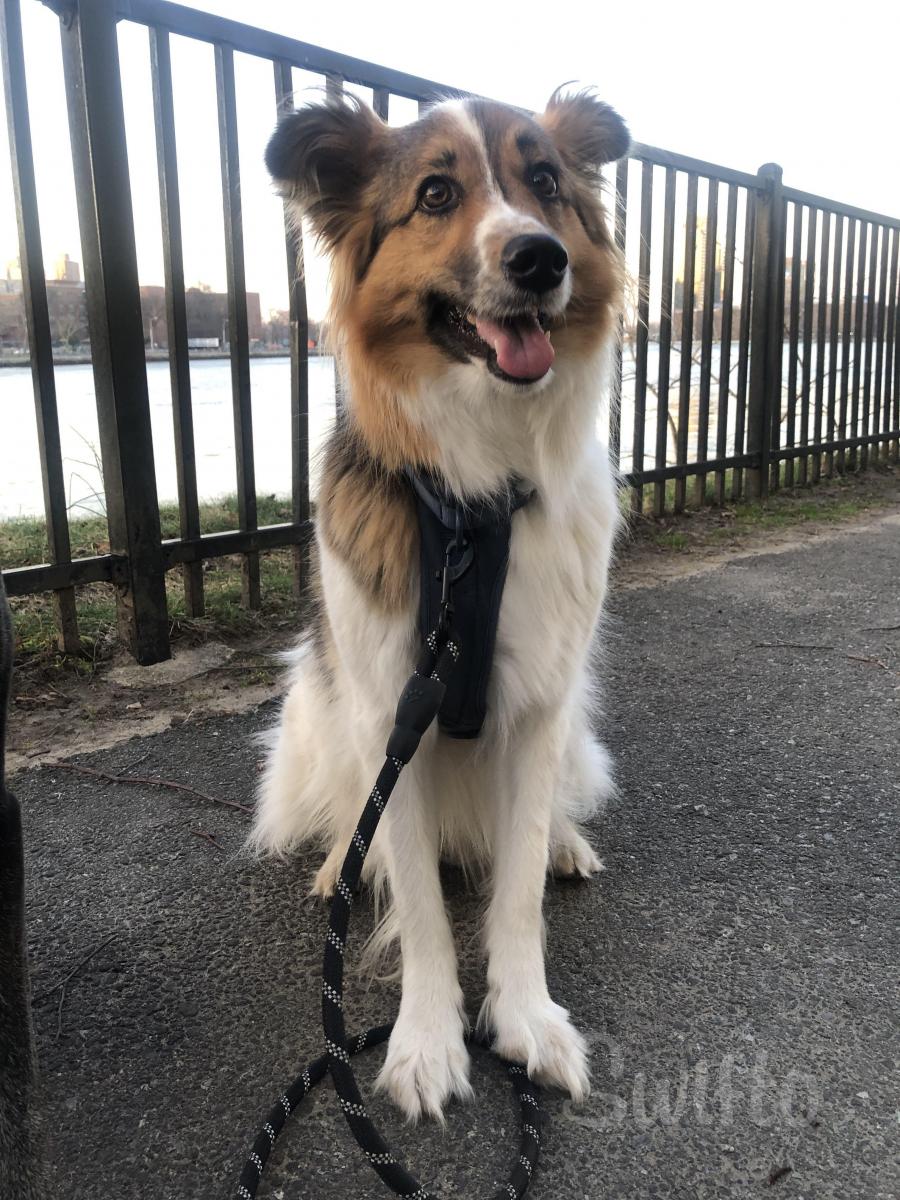
At Swifto, we pride ourselves on providing the best care for our clients' dogs. Walking a dog is more than just a physical activity; it's an opportunity to reinforce good behavior and build a trusting relationship. To help our dog walkers excel, we've collaborated with Chelsey Biosi, owner of Command Canine, to share some valuable tips on effectively training dogs during walks in Charlotte.
1. Equip Yourself Properly
Having the right equipment is essential for a successful walk. Use a well-fitted harness or collar and a sturdy leash for each dog. Harnesses are especially useful for maintaining control and preventing neck injuries. Avoid using retractable leashes as they can make training more challenging.
2. Learn the Dog’s Basics
Before starting a walk, familiarize yourself with the dog's basic commands and behavior. Speak with the owner to understand what commands the dog knows, such as "sit," "stay," and "heel." This knowledge will help you reinforce their training during walks.
3. Maintain Consistency
Consistency is key in dog training. Use the same commands and techniques the dog is accustomed to. If a dog is used to a specific way of walking or responding to commands, stick with it to avoid confusion and reinforce positive behavior.
4. Use Positive Reinforcement
Positive reinforcement is a powerful tool in dog training. Reward the dog with treats, praise, or a favorite toy when they exhibit good behavior during walks. For example, if the dog walks calmly beside you, offer a treat and some praise. This encourages them to continue behaving well.
5. Address Unwanted Behavior Immediately
If a dog pulls on the leash or exhibits other unwanted behaviors, correct them promptly. Stop walking and ask the dog to sit before continuing. This teaches the dog that pulling will not get them where they want to go. Consistent correction helps reinforce good leash manners.
6. Integrate Training into Walks
Make training a part of the walk. Use commands like "sit," "stay," and "heel" during your route. Practice these commands at various points, such as street crossings or when the dog is distracted by their surroundings. This keeps the dog focused and reinforces their training.
7. Explore Charlotte’s Dog-Friendly Areas
Charlotte boasts numerous dog-friendly parks and trails that are perfect for walks and training. Places like Freedom Park, Romare Bearden Park, and the Little Sugar Creek Greenway provide excellent environments for training. These locations offer varied scenery and distractions, which are great for reinforcing training commands.
8. Gradual Exposure to Distractions
Start walking the dog in a low-distraction environment and gradually introduce more stimulating areas. Begin with quiet neighborhood walks and slowly progress to busier parks or downtown areas. This helps the dog learn to focus on you despite the distractions.
9. Stay Calm and Patient
Dogs are sensitive to your emotions, so it's crucial to remain calm and patient during walks. If you become frustrated, the dog may become anxious and harder to manage. Keep your composure and approach training with a positive attitude, even if progress is slow.
10. Provide Physical and Mental Stimulation
Walks are not only for physical exercise but also for mental stimulation. Allow the dog to explore, sniff, and experience new environments. This keeps them engaged and mentally stimulated, which can reduce behavioral issues.
11. Communicate with Owners
Keep the dog’s owner informed about their pet’s progress and any training issues you encounter. Collaboration with the owner ensures consistency in training techniques and helps address any behavioral problems more effectively.
12. Seek Professional Guidance if Needed
If you encounter persistent behavioral issues or need additional training techniques, don't hesitate to seek professional help. At Swifto, we highly recommend Command Canine, for specialized training sessions and advice tailored to specific needs.
Walking dogs as a professional dog walker in Charlotte can be a rewarding experience when done correctly. By following these tips and maintaining consistent training efforts, you can ensure enjoyable and productive walks for both you and the dogs. Remember, the bond you build through consistent and positive training is invaluable for a well-behaved and happy dog.
For more personalized training tips and professional assistance, visit Command Canine. They're here to support you in providing the best care and training for your clients' beloved pets!
By Chelsey Biosi, Owner and Head Dog Trainer at Command Canine

